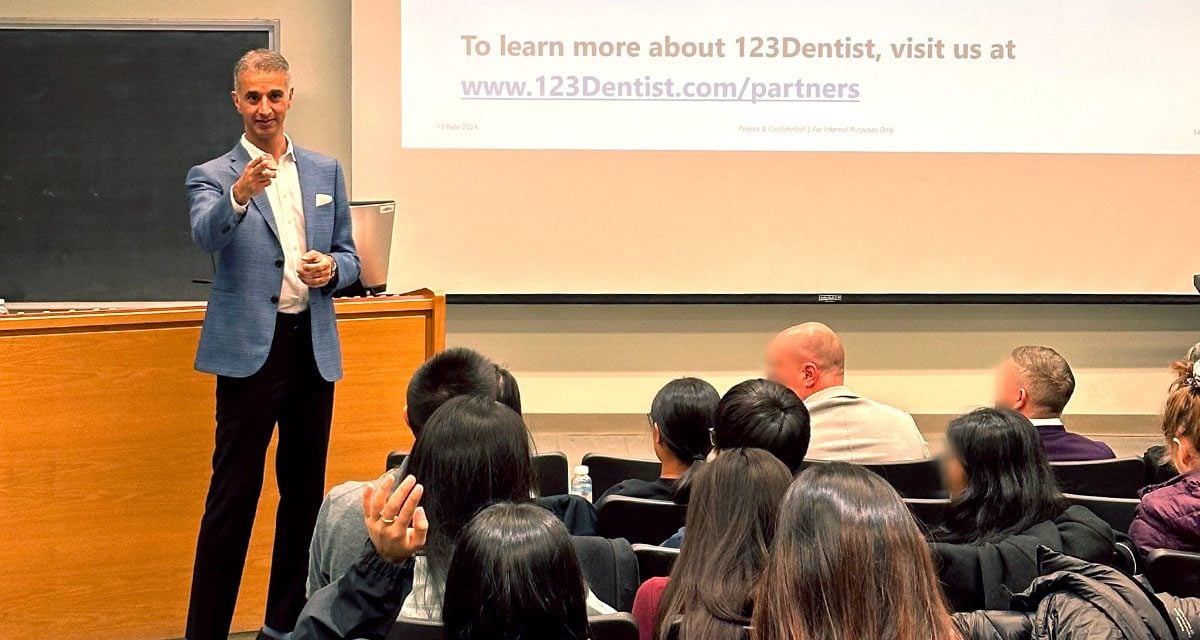There is little doubt that Canada is one of the best places to live in the world. A diverse, open-minded population, economic prosperity, public healthcare, all the natural wonders and some of the best summer weather in the world, we know it’s a great place to be, but are we really aware of just how great it is to be Canadian? With Canada Day upon us, the 123 Dentist community wanted to take a look at some of Canada’s top achievements and gifts to the world.
The Egg Carton
In 1911, a dispute between a hotel owner and a farmer lead Joseph Coyle of Smithers, British Columbia to create a cardboard egg carton. The dispute was about how many eggs arrived broken and Coyle thought there had to be a better way to deliver eggs. He made the first cartons by hand and eventually created a machine that is on display at the Royal BC Museum. Since it’s creation, the Coyle carton has changed very little in over a century.
The Wonderbra
It might be hard to imagine, but through the 1960’s most women wore highly structured undergarments like girdles. The modern Wonder-Bra was created during world war two when in 1939, certain elastic fabrics were in short supply. Louise Poirier, a Canadian, brought the more modern iteration of the product to market in 1963 and it became the bases for the modern push-up bra we know today.
IMAX
If you aren’t watching the latest summer blockbusters in IMAX, you’re missing out. The large format cinema camera system was created by Canadians Graeme Ferguson, Robert Kerr, Roman Kroitor and William C. Shaw. It has the ability to display images at much higher resolutions than conventional formats, up to 8k, (8000 Lines of Horizontal resolution) which is more than double most theatrical films. In the past, IMAX and it’s cousin OMNIMAX were reserved for short, documentary and nature films because of the camera size, and projector limitations, but that’s all changed now, and the format started in Canada is enjoyed around the world.
Superman
https://www.youtube.com/watch?v=D9GYWbhBoHM
Jerry Siegel, the writer of Superman, is American. But the artist credited with his iconic blue tights and red cape is Canadian Joe Shuster. In 1932, Superman changed the lives of millions of children by helping to popularize comic books and leading to the creation of characters like Batman, Captain America and Captain Marvel, all of which gave birth to modern characters we know and love today. That’s right, the hero who embodied the American ideal is half-Canadian.
Basketball
https://www.youtube.com/watch?v=xzsbZ3oem3Y
In 1891, a Canadian gym teacher wrote down 13 rules for a game he would play with his students. Dr. James Naismith, ever the modest Canadian, declined to call the sport Naismith Ball and the sport eventually became modern Basketball. Soon other schools and colleges were playing the game and making it popular around the world. When it began, baskets at either end of the court were solid and a janitor or assistant had to retrieve the ball after every point. Back when the first game was played, the final score was just 1-0, but we’ve come a long way since then.
Peanut Butter
A Montreal pharmacist named Marcellus Gilmore Edson patented Peanut Butter in 1884. He wanted to create a nutty food paste for people who couldn’t chew. Ironic, since a slice of bread with peanut butter on it makes for a lot of chewing. Later, John Harvey Kelogg, the creator of corn flakes, patented another method for creating peanut butter.
The Walkie Talkie
https://www.youtube.com/watch?v=Yp5j2mn9lU0
Although it’s been credited to a number of others, most associate the creation of the modern Walkie Talkie with Donald L. Hings, a Canadian and British Columbian. Originally called a ‘packset,’ the device was created at Hings’ company CM&S in the 1937. When war broke out with Germany, Hings went to Ottawa to re-develop the packset for military use. Voilà, the Walkie-Talkie was born. You’d think that in a digital age the Walkie-Talkie might have gone the way of the A-Track but no, it’s more popular than ever in emergency work, the military, on film sets, construction sites and even as a children’s toy.
Discovery of Stem Cells
In 1961 Dr. James Till and Dr. Ernest McCulloch made history by showing the world that they could transplant stem cells, cells that had not yet been assigned an identity, into a test subject with potentially miraculous effects. Today, stem cell research is a piece of many scientific breakthroughs and the discovery of these two scientists at the Ontario Cancer Institute may well end up being more important than any other discovery on this list. Scientists have predicted stem cells may hold the cure to cancer, Alzheimer’s, diabetes and even reverse aging, extending our lives by decades.
Standard Time Zones
https://www.youtube.com/watch?v=vRh7ngcJ2HA
Originally from Scotland, Sanford Fleming immigrated to Ontario at 18. He became a railroad engineer and after missing a train in 1876 in Ireland, Fleming came up with the idea of a 24 hour clock for the entire world to follow. To make following the single world clock possible, he suggested time zones be implemented locally, but insisted that every country adopt his new system. Fleming spoke at conferences around the world to promote the idea, and by 1929 most countries had adopted the world clock and the standard time that we know today.
Insulin
Before the discovery of insulin by Canadian doctors Frederick Banting, Charles Best and John James Rickard Macleod, diabetes was a feared, almost certainly deadly disease. Banting first used a dog to prove his theory that the pancreas was responsible for secreting insulin to aid in digestion. By removing the animal’s pancreas, they were able to cause diabetes and prove to the scientific community that they were right. By extracting the antibiotic insulin from the removed pancreas and injecting it into the now diabetic dog, they were able to relieve the symptoms of diabetes. In 1922 the first human subject, a 14 year old boy named Leonard Thompson was chosen. Once near death, the insulin injections gave Leonard and millions like him a new lease on life.
The Telephone
Another Canadian born in Scotland, Alexander Graham Bell immigrated to Canada as a child. As many Canadians will know, he invented the telephone, one of the great innovations of the modern age, which made instantaneous, real-time communication around the world possible. As a scientist, Bell actually found his most popular invention to be an intrusion on his real work, which included the metal detector. He even refused to have a phone in his study. Today the telephone is indispensible and has become the world’s most popular small appliance. Bell, one of Canada’s largest media companies, owes it’s origins to Alexander Graham Bell. Can you imagine a world without the telephone?
The First Light Bulb
https://www.youtube.com/watch?v=d_b4TDduGio
Most people credit Thomas Edison with the creation of the modern light bulb, but did you know he merely perfected what Henry Woodward, a medical student from Toronto first created? In 1874, Woodward patented the first incandescent lamp with an electric light bulb. After successfully testing the device, he sold his share in the patent to Thomas Edison, who found a more practical way to replicate the experiment. The result was the modern light bulb.
Can you imagine a world without Peanut Butter, Telephones or Light Bulbs? Maybe those devices would have been created eventually without Canada’s help, but would Superman’s cape be red or would we travel across the country inside the same time zone? No matter what, you can’t deny Canada’s contribution to the modern world, and as we approach the mid-way point of the second decade of the Canadian century, it’s exciting to wonder what new achievements, what great heights we will reach.






